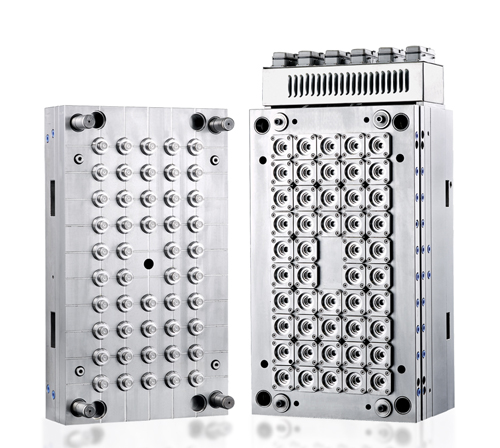 CN
CN info@seacomould.com
info@seacomould.com +86-18969612882
+86-18969612882
How to use bottle cap molds to produce high quality bottle caps
2020-02-02
Reasonably formulate the injection molding process for bottle cap molds
It is of great significance to rationally formulate the injection molding processing technology for bottle cap molds, reasonably design and manufacture molds according to drawings, and even reasonably choose injection molding processing equipment. There is also a difference in injection pressure and injection rate between precision injection molding and ordinary injection molding. Precision injection molding often uses high pressure or ultra high pressure injection and high speed injection to obtain smaller molding shrinkage. Whether the mold is designed properly will directly affect the shrinkage of plastic products. In precision injection molding, the mold is one of the keys to obtaining precision plastic products that meet the quality requirements. The mold for precision injection molding should actually meet the product size, accuracy and Shape requirements.
Because the injection molding process is a process of transforming the plastic from a solid (powder or pellet) to a liquid (melt) to a solid (product). From pellets to the melt, and then from the melt to the product, the temperature field, stress field, flow field, and density field are subject to the action of these fields. Under the combined action of these fields, different plastics (thermoset or thermoplastic, crystallinity) (Non-crystalline, reinforced or non-reinforced, etc.) have different polymer structure morphology and rheological properties. All the factors that affect the above question will certainly affect the physical and mechanical properties, size, shape, accuracy and appearance quality of plastic products. However, even if the precision and size of the mold are consistent, the actual size of the plastic product it molds will be inconsistent due to the difference in shrinkage. Therefore, effectively controlling the shrinkage of plastic products is very important in precision injection molding technology. In the process of processing, the factors that affect precision injection molding products mainly come from the accuracy of the mold, injection molding shrinkage, and the environmental temperature and humidity changes of the product.

The cavity size of the bottle cap mold is obtained from the size of the plastic product plus the estimated shrinkage, and the shrinkage is a value within a range recommended by the plastic manufacturer or the engineering plastics manual. The shape of the gate and the position of the gate are related to the distribution, but also to the crystal orientation (anisotropy) of the engineering plastic, the shape and size of the plastic product, and the distance and position to the gate. The main factors affecting plastic shrinkage are thermal shrinkage, phase change shrinkage, orientation shrinkage, compression shrinkage, and elastic recovery. These influencing factors are related to the molding conditions or operating conditions of precision injection molded products. Therefore, the relationship between these influencing factors and injection conditions and their apparent factors must be considered when designing the mold, such as injection pressure and cavity pressure and filling speed, injection melt temperature and mold temperature, mold structure and gate form and distribution. , And the cross-sectional area of the gate, the wall thickness of the product, the content of the reinforcing filler in the plastic material, the crystallinity and orientation of the plastic material and other factors. The influence of the above factors is also different due to different plastic materials, other molding conditions such as temperature, humidity, continued crystallization, internal stress after molding, and changes in the injection molding machine.
The appropriate injection molding machine should be selected according to the plastic material of the bottle cap mold, the dimensional accuracy of the finished product, the piece weight, quality requirements and the expected mold structure.
When designing precision injection molds, in addition to the design elements of general molds, the following points must be considered:
- a Use appropriate mold size tolerances;
- b to prevent the occurrence of molding shrinkage error;
- c prevent injection deformation;
- d prevent demoulding;
- e. Mold manufacturing errors are minimized;
- f to prevent errors in mold accuracy;
- g to maintain mold accuracy.
Related Products
Latest Updated
- China automotive mold manufacturing is facing the development trend of 2025
- The major development trend of automotive mould technology
- How to find a good automotive mould supplier and manufacturer in China
- How to make the injection plastic mould gate design
- The most likely defects in the mold injection molding process
- Injection mold repair steps and precautions
- Auto mould making-automould injection moulding company
- How to choose plastic mould supplier in Taizhou China
Relative Articles
- Design of Multi-cavity Injection Bottle Cap Mould
- Features of plastic bottle cap mold
- Introduction of the advantages of plastic bottle cap mould
- Considerations for the design of plastic bottle cap moulds
- Analysis of plastic bottle threads cap mould
- Technical parameters of the plastic cap mould
- The structure and classification of cap mould
- Plastic Bottle Cap mould Industry Technology
- The performance requirements of plastic bottle cap mold steel
- Structural design of beverage bottle cap mold
Hot Articles
- Mold plating chrome treatment technology is good for mold life
- Analysis of the causes of the fusion line of plastic mold products and corresponding improvement measures
- what are the common problem in the plastic mould injection process
- Leak-proof design of bottle cap mould
- What performance requirements should be met when selecting steel for injection mold
- When Huangyan Mold factory come back to work after coronavirus
- Coronavirus China Wuhan
- How to check the test of the injection mould
- How to choose plastic mould supplier in Taizhou China
- What principles should be followed in the design and development of bumpers mould
- Bottle cap mold manufacturing process
- Six standards for testing the quality of antifreeze bucket mould
Hot tags: china mold maker,taizhou,huangyan, suppliers, manufacturers, factory, maker,customized









